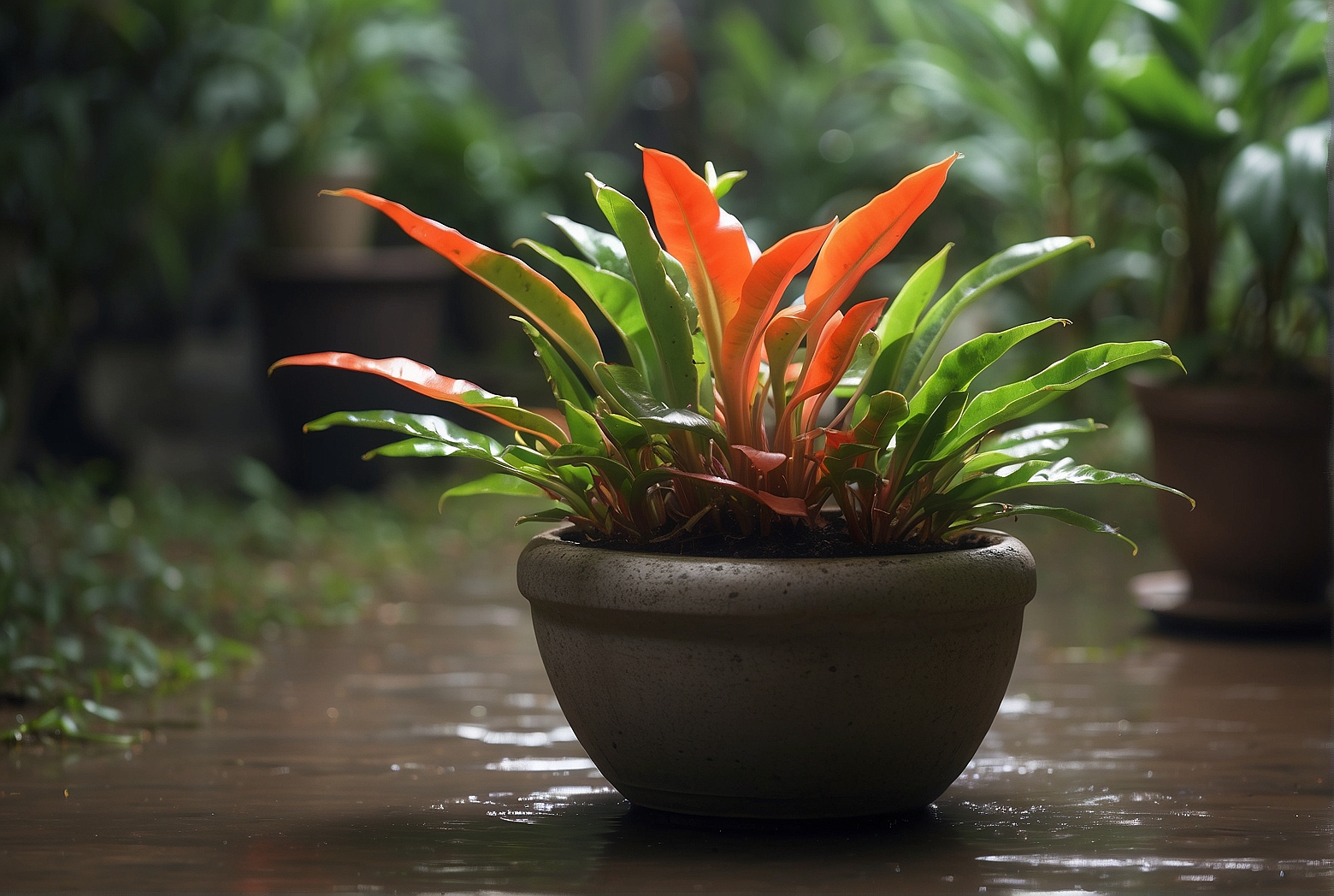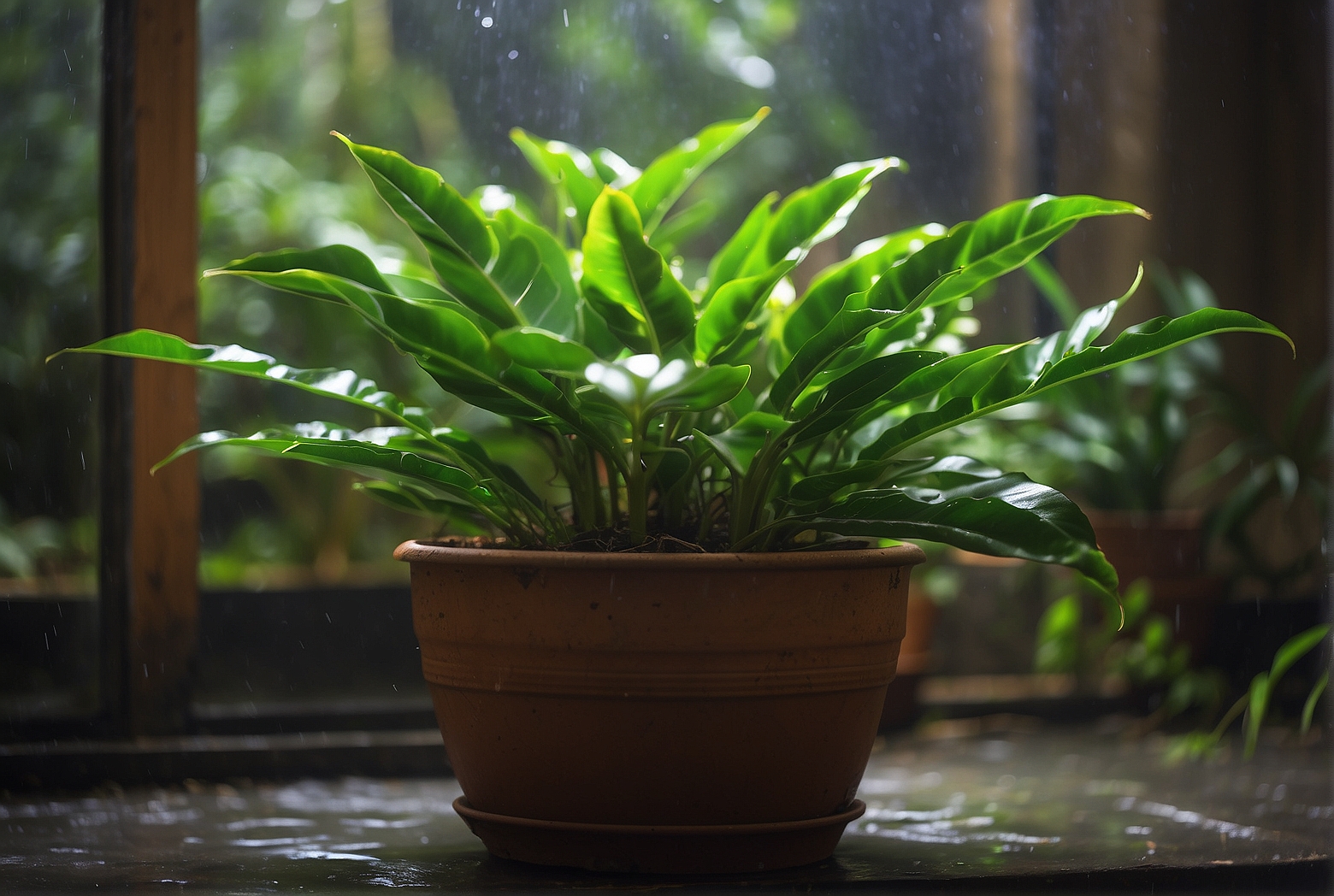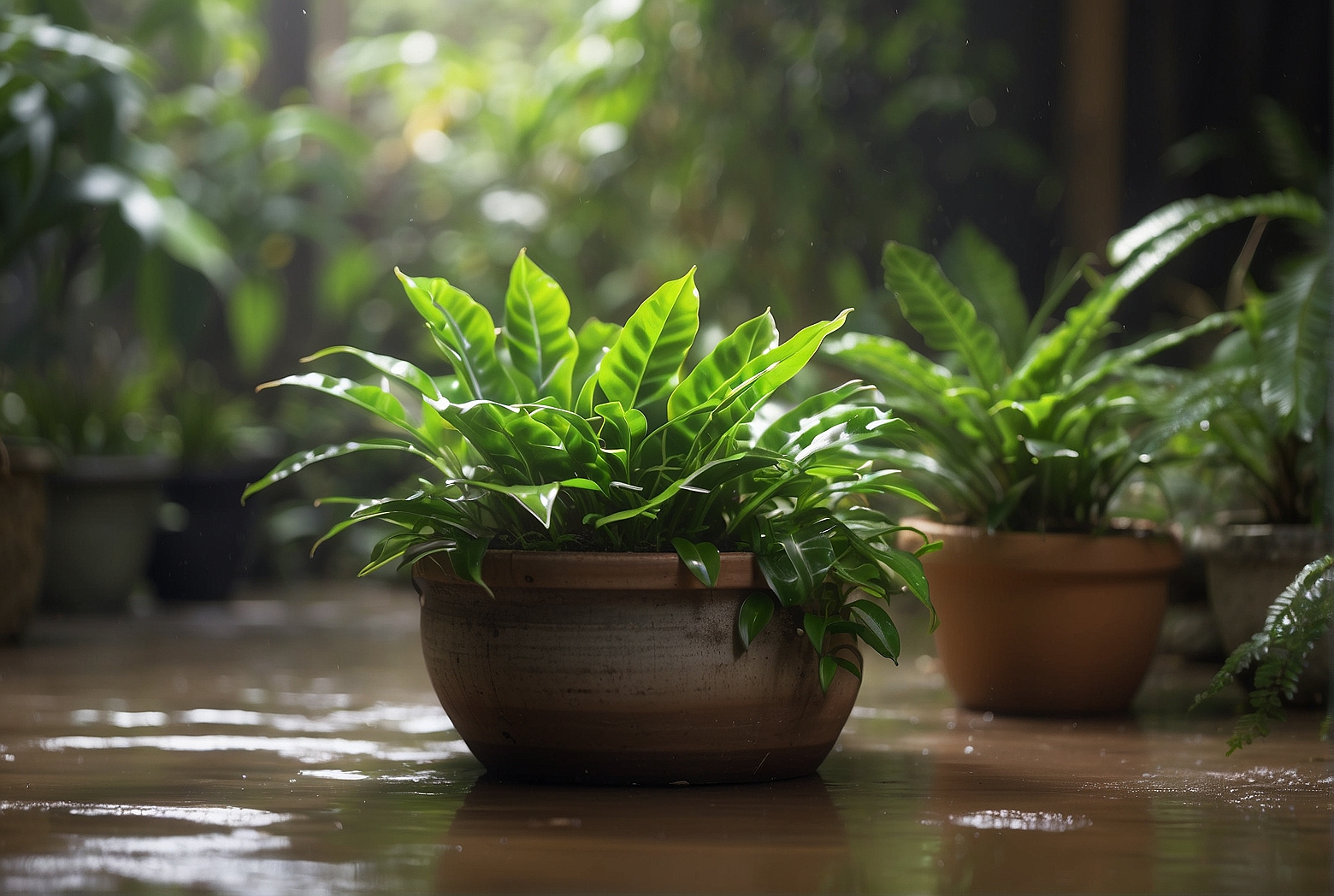Last Updated on April 2, 2024 by Tony Manhart
Are you curious to find out whether ZZ plants flourish in humid environments? Well, you’re in luck! In this article, we’ll be exploring the fascinating world of ZZ plants and their relationship with humidity. Whether you’re a seasoned plant enthusiast or just starting out with your indoor garden, understanding the ideal conditions for your green companions is crucial. So, let’s dive right in and uncover the truth about whether ZZ plants truly thrive in humid environments.
Introduction
Understanding ZZ Plants
ZZ Plants, also known as Zamioculcas zamiifolia, are popular houseplants that have gained widespread popularity due to their unique and attractive foliage. These plants are native to Eastern Africa and belong to the family Araceae. ZZ Plants are known for their ability to tolerate low light levels and neglect, making them an excellent choice for both beginner and experienced gardeners.
Importance of Humidity for Plants
Humidity plays a crucial role in the overall health and well-being of plants. It refers to the amount of moisture present in the air, and different plant species have varying requirements when it comes to humidity levels. Maintaining appropriate humidity levels is essential for proper plant growth, as it directly affects their ability to transpire, absorb nutrients, and photosynthesize.
Native Habitat of ZZ Plants
Exploring the Natural Environment of ZZ Plants
ZZ Plants are native to the tropical regions of Eastern Africa, specifically Zanzibar, Kenya, and Tanzania. In their natural habitat, they can be found growing in shaded areas of forests and savannas, where they benefit from the protection of taller trees and ample moisture from the surrounding environment.

Climate and Humidity Levels
The climate in the natural habitat of ZZ Plants is characterized by high temperatures and humidity. These plants thrive in areas with an average annual temperature ranging from 75°F to 85°F (24°C to 29°C) and humidity levels of 50% to 80%. The combination of warmth and moisture provides optimal growing conditions for ZZ Plants and allows them to flourish in their native environment.
Adaptability of ZZ Plants
Survival Mechanisms of ZZ Plants
ZZ Plants have developed various survival mechanisms that enable them to adapt to different environments. One of these mechanisms is their ability to store water in their thick, fleshy leaves and rhizomes. This adaptation allows ZZ Plants to withstand periods of drought and low humidity by using the stored water reserves.
Ability to Thrive in Different Environments
One of the key characteristics of ZZ Plants is their adaptability to different environments. They can tolerate a wide range of humidity levels, making them suitable for both humid and arid conditions. This adaptability makes ZZ Plants an excellent choice for indoor cultivation, where humidity levels can be controlled to provide optimal growing conditions.
Effects of Humidity on ZZ Plants
The Relationship between Humidity and ZZ Plants
Humidity plays a significant role in the growth and development of ZZ Plants. Adequate humidity levels help to prevent excessive moisture loss through transpiration, ensuring that the plants remain hydrated and healthy. Insufficient humidity can lead to wilting, yellowing of leaves, and overall decline in plant vigor.

Optimal Humidity Levels for ZZ Plants
While ZZ Plants can tolerate a wide range of humidity levels, they thrive best in moderate to high humidity conditions. Ideally, humidity levels of 50% to 80% are considered optimal for ZZ Plants, mimicking their natural habitat. However, they can also adapt to lower humidity levels as long as they receive proper care and attention.
Humidity Requirements for ZZ Plants
Ideal Humidity Range for ZZ Plants
To provide the best growing conditions for ZZ Plants, aim to maintain humidity levels between 50% and 80%. This range closely resembles the conditions found in their native habitat and promotes healthy growth and development.
Signs of Inadequate Humidity
Inadequate humidity can manifest in several ways in ZZ Plants. Some common signs of low humidity include leaf yellowing, drooping, and browning of leaf tips. Leaves may also become crispy or develop brown edges. If you notice these signs, it’s an indication that the humidity levels need to be increased to create a more suitable environment for your ZZ Plants.
Preventive Measures for Low Humidity
If the humidity levels in your home or indoor environment are low, there are several preventive measures you can take to increase humidity for your ZZ Plants. Placing the plants on a pebble tray filled with water, regularly misting the leaves with water, or using a room humidifier are effective ways to elevate humidity levels. It’s crucial to monitor humidity levels regularly and make adjustments accordingly.
Special Considerations for High Humidity
Potential Challenges of High Humidity
While ZZ Plants can tolerate high humidity levels, excessively moist conditions can create a favorable environment for fungal diseases and root rot. It’s important to strike a balance and not let the humidity levels become too high for an extended period. Proper air circulation and avoiding over-watering can help mitigate the potential challenges of high humidity.
Preventing Excessive Moisture for ZZ Plants
To prevent excessive moisture for ZZ Plants in high humidity conditions, it is crucial to ensure proper drainage in the planting containers. Using well-draining soil and avoiding over-watering will help maintain a healthy balance of moisture in the root zone. Additionally, placing the plants in well-ventilated areas will aid in preventing moisture buildup and reducing the risk of fungal diseases.
Humidity Control Methods
Managing Humidity in Indoor Environments
Indoor environments often have lower humidity levels, especially during the winter months when heating systems are in use. To manage humidity, consider placing a humidifier in the room where your ZZ Plants are located. This will help maintain the ideal humidity range for these plants. Additionally, grouping plants together can create a microclimate that increases humidity levels around them.
Using Humidifiers and Dehumidifiers
Humidifiers are effective tools for increasing humidity levels in dry indoor environments. These devices work by releasing moisture into the air, creating a more favorable environment for ZZ Plants. Conversely, dehumidifiers can be used to lower humidity levels if they become excessively high. Both humidifiers and dehumidifiers are available in various sizes and types to suit different needs and budgets.
Other Techniques for Adjusting Humidity Level
In addition to humidifiers and dehumidifiers, there are other techniques you can employ to adjust humidity levels for ZZ Plants. These include misting the leaves with water, placing a tray of water near the plants, or using a moisture-retention mulch around the base of the plant. Regularly monitoring the humidity levels with a hygrometer will help you gauge whether further adjustments are necessary.
Indoor Cultivation of ZZ Plants
Creating Suitable Humidity Conditions in Homes
Indoor cultivation of ZZ Plants offers control over the growing environment, including humidity levels. To create suitable humidity conditions in your home, consider placing a humidifier in the room where your ZZ Plants are located. Additionally, grouping plants together or positioning them near a bathroom or kitchen can help create a more humid microclimate.
Tips for Growing ZZ Plants Indoors
When growing ZZ Plants indoors, there are a few key tips to keep in mind to ensure their success. Firstly, use well-draining soil that allows excess water to flow through easily. ZZ Plants prefer slightly moist soil and can be susceptible to root rot if over-watered. Additionally, provide the plants with bright, indirect light, as they can suffer from leaf scorch if exposed to direct sunlight for extended periods. Regularly dust the leaves to keep them clean and ensure proper functioning of their stomata, which help with transpiration.
Potential Benefits of Increased Humidity
Promoting Growth and Health of ZZ Plants
Maintaining optimal humidity levels for ZZ Plants can have several benefits for their growth and overall health. Increased humidity promotes lush foliage, encourages root development, and reduces the risk of leaf yellowing and browning. By creating a favorable environment, you can enhance the longevity and vitality of your ZZ Plants.
Enhancing Air Quality in Indoor Spaces
Increasing humidity levels for ZZ Plants not only benefits the plants themselves but also contributes to improving air quality in indoor spaces. Higher humidity levels help to reduce the dryness in the air, which can lead to respiratory discomfort and dry skin. Additionally, plants act as natural air purifiers, absorbing carbon dioxide and releasing oxygen, thereby enhancing the quality of the air you breathe.
Conclusion
Summarizing the Relationship between ZZ Plants and Humidity
ZZ Plants are versatile and adaptable houseplants that can tolerate a wide range of humidity levels. While they thrive in moderate to high humidity conditions, they can also adapt to lower humidity levels with proper care. Maintaining optimal humidity is crucial for their growth and overall health, and there are various methods available to control humidity levels in indoor environments. By providing the right amount of humidity, you can create the ideal conditions for your ZZ Plants to flourish and enjoy their unique beauty.
Tony Manhart is a passionate gardener who has been tending to gardens for over 20 years. He takes pride in creating beautiful outdoor spaces with plants, trees, and shrubs that can thrive in any environment. He loves to share his knowledge with others and has taught classes on gardening basics and advanced techniques. He is committed to sustainability, using natural and organic methods to create and maintain gardens. He also works with local organizations to create green spaces for communities. When he’s not gardening, Tony enjoys hiking, reading, and spending time with his family.

